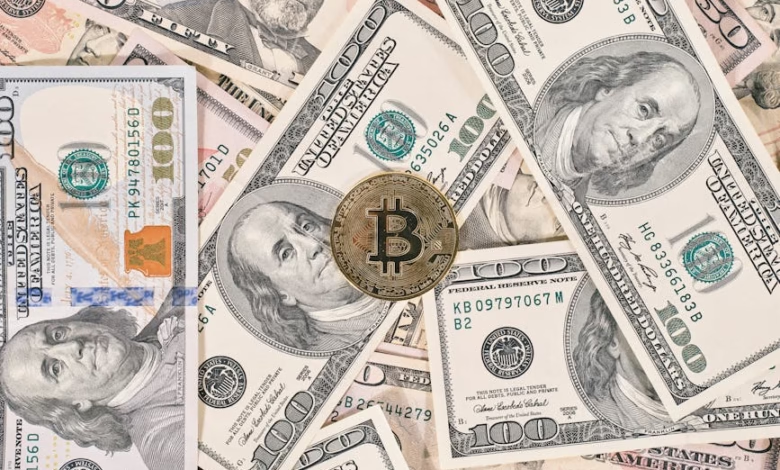Navigating Gold Mining: Exploration, Market Trends, and Sustainable Practices for a Precious Future

Gold mining has long been a cornerstone of the global economy, intertwining with various facets of investment, technology, and sustainable practices. As one of the most sought-after commodities, gold serves not only as a safe haven asset during economic turbulence but also as a critical component in jewelry, electronics, and luxury goods. This article delves into the intricate processes of gold mining, from exploration and extraction techniques to the production of gold and its role in the market. We will explore how gold market trends influence prices and investment opportunities, the impact of global demand on gold reserves, and the significance of sustainable gold mining practices that prioritize environmental responsibility. Additionally, we will analyze the interplay between gold and inflation, the rise of gold ETFs, and the emerging trends in gold recycling and refining. Whether you are a seasoned investor or merely curious about the dynamics of the gold trade, this comprehensive overview will provide valuable insights into the ever-evolving world of gold mining and its significance in today’s economy.
- 1. The Fundamentals of Gold Mining: Exploration and Extraction Techniques
- 2. Understanding Gold Market Trends: Prices, Investment Opportunities, and Global Demand
- 3. Sustainable Gold Mining Practices: Balancing Production with Environmental Responsibility
1. The Fundamentals of Gold Mining: Exploration and Extraction Techniques
Gold mining is a complex process that involves multiple stages, starting with exploration and leading to extraction. Understanding these fundamentals is crucial for anyone interested in the gold market trends and investment opportunities.
The exploration phase is the first step in gold mining, where geologists and mining companies search for gold reserves. This involves geological surveys, sampling, and drilling to identify areas with high concentrations of gold. Advanced technologies, such as geophysical methods and satellite imagery, have greatly improved the efficiency of this process. When promising sites are discovered, they are further analyzed to evaluate the potential for profitable gold production.
Once a viable gold deposit is confirmed, the extraction process begins. There are two primary techniques for extracting gold: open-pit mining and underground mining. Open-pit mining is used when gold deposits are located near the surface. This technique involves removing large amounts of soil and rock to access the gold, which can be both cost-effective and efficient. On the other hand, underground mining is employed for deeper deposits and often requires more advanced technology and safety measures, as miners work in confined spaces.
The extraction methods can also significantly impact gold prices and the overall gold market analysis. Factors such as production costs, technological advancements in gold refining, and environmental considerations in sustainable gold mining practices can influence the supply of gold in the market. Moreover, as global gold demand continues to rise, driven by various factors including gold as a safe haven asset during economic uncertainty and inflation, the importance of responsible mining practices becomes increasingly critical.
In addition to conventional mining, gold recycling plays a vital role in the gold supply chain. Reclaimed gold, often sourced from old jewelry, electronics, and other products, can be refined and reintroduced into the market, contributing to sustainability.
The dynamics of gold mining are also affected by global trends, such as central banks' gold purchases and the growing interest in gold ETFs and gold futures as investment vehicles. Investors often view physical gold, including gold bullion and coins, as a hedge against inflation and currency fluctuations, further highlighting the intricate relationship between gold mining and the broader economic landscape.
Understanding the fundamentals of gold mining, including exploration and extraction techniques, not only provides insights into the physical aspects of gold production but also sheds light on the investment opportunities available, such as gold coins investing and luxury gold collectibles. As the gold market evolves, staying informed about these fundamentals allows investors to navigate the complexities of gold as a commodity and its role in the modern financial ecosystem.
2. Understanding Gold Market Trends: Prices, Investment Opportunities, and Global Demand
The gold market has long been a focal point for investors seeking stability and growth in their portfolios. Understanding gold market trends is crucial for anyone interested in gold investment, as fluctuations in gold prices can significantly impact both short-term and long-term strategies. Gold is often viewed as a safe haven asset, especially during times of economic uncertainty, inflation, or geopolitical tensions. This perception drives global gold demand, making it essential for investors to keep a close eye on market conditions.
Currently, gold prices are influenced by a variety of factors, including central banks' gold reserves, global economic indicators, and the performance of gold futures. Investors often turn to gold ETFs and gold bullion as a means of gaining exposure to the gold market without the need for physical gold ownership. Additionally, gold coins investing remains popular, offering both aesthetic value and potential appreciation in worth.
In recent years, the relationship between gold and cryptocurrency has become a topic of discussion among investors. While some view cryptocurrencies as a new form of currency, many still regard gold as a more stable investment. Gold technology advancements also play a role in reshaping the market, particularly in areas like gold refining and sustainable gold mining practices that address environmental concerns.
The luxury gold sector, encompassing gold jewelry and collectibles, adds another layer to the market dynamics. As consumer preferences evolve and global demand for ethically sourced gold increases, the importance of gold recycling and sustainable mining becomes increasingly apparent. Furthermore, gold smuggling and illicit trade practices can disrupt market stability, making it vital for regulatory bodies to monitor and mitigate these issues.
In summary, gold market analysis requires a comprehensive understanding of various elements, including gold prices, investment opportunities, and the global demand landscape. As investors navigate the complexities of the gold market, they should consider the multifaceted nature of gold, from gold bars and gold coins to the implications of gold and inflation, ensuring a well-informed approach to gold production and investment strategies.
3. Sustainable Gold Mining Practices: Balancing Production with Environmental Responsibility
Sustainable gold mining practices are increasingly essential as the industry faces pressure to balance production with environmental responsibility. The gold mining sector has long been associated with environmental degradation, including habitat destruction, water pollution, and significant carbon emissions. However, recent advancements in technology and a growing awareness of sustainability have led to a shift towards more responsible practices.
One of the primary methods being adopted is the use of environmentally friendly extraction techniques. For instance, some companies are focusing on reducing the use of toxic chemicals, such as cyanide and mercury, in the gold refining process. Instead, they are exploring alternatives, like bioleaching, which utilizes natural bacteria to extract gold from ore without causing harm to the ecosystem. This method not only minimizes environmental impact but also aligns with the increasing global demand for sustainable gold mining.
Moreover, the gold industry is actively investing in improving the efficiency of gold production. Innovations in gold technology are allowing miners to extract gold reserves with less waste and lower energy consumption. By optimizing operational processes, companies can reduce their carbon footprint and contribute to a more sustainable gold market. This is particularly relevant in the context of gold and inflation, as rising gold prices may drive exploration into more remote areas, where environmental considerations are paramount.
Another critical aspect of sustainable gold mining is the increased focus on gold recycling. Gold recycling helps mitigate the need for new mining operations, as recycled gold can be repurposed for various uses, including gold jewelry, gold coins, and even gold ETFs. This not only reduces the environmental impact associated with mining but also supports the gold trade by providing a steady supply of gold without the associated ecological costs.
Furthermore, addressing issues such as gold smuggling and illegal mining is crucial for promoting sustainable practices. These activities not only harm the environment but also undermine the integrity of the gold market. By enforcing stricter regulations and promoting transparency within the gold supply chain, stakeholders can help ensure that gold mining contributes positively to both the economy and the environment.
In conclusion, as the gold market continues to evolve, the emphasis on sustainable gold mining practices is becoming increasingly vital. By adopting innovative technologies, focusing on gold recycling, and combating illegal mining, the industry can balance the demand for gold as a safe haven asset, particularly in an era of economic uncertainty, with the need to protect our planet for future generations. This approach not only secures the future of gold production but also enhances the reputation of gold as a responsible investment choice in an ever-changing landscape.
In conclusion, the landscape of gold mining encompasses a rich tapestry of exploration, extraction, and production that is intricately linked to the dynamics of the global gold market. As we have explored, understanding the fundamentals of gold mining not only involves mastering various extraction techniques but also staying attuned to the ever-changing gold market trends, including fluctuations in gold prices and investment opportunities. The demand for gold remains robust, driven by its status as a safe haven asset during times of economic uncertainty, alongside the allure of gold jewelry, collectibles, and bullion.
Moreover, the conversation around sustainable gold mining practices has never been more critical. Balancing the need for gold production with environmental responsibility is essential for the future of the industry, ensuring that gold reserves are not only preserved but also responsibly utilized. The rise of gold recycling and advancements in gold technology can play a significant role in this endeavor.
As investors consider their options, whether through gold ETFs, futures, or physical gold investments like coins and bars, it is important to remain informed about market analysis and trends that influence the gold trade. With central banks increasing their gold holdings and the potential interplay between gold and cryptocurrency, the future of gold investment seems promising and multifaceted.
By understanding these key aspects of gold mining, you can make informed decisions in your investments, whether you are looking to diversify your portfolio with luxury gold assets or seeking to capitalize on the long-term stability that gold offers amidst inflationary pressures. As the global gold demand continues to evolve, being aware of sustainable practices and market trends will equip you with the knowledge to navigate this precious metal's enduring legacy.
References:
[Insert your references here in APA format]




